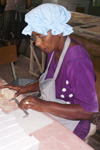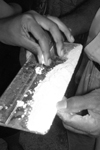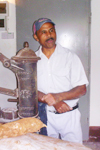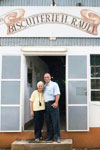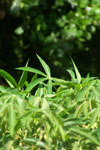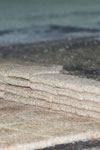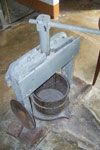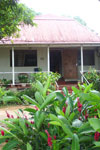Around 1735, Mahé de La Bourdonnais brought a tuber of South American origin, called cassava or manioc, into Mauritius. At the time, sugar estates were growing it and using it mainly for cattle feed. The oxen would pull cartloads of sugar cane from the fields to the factory.
In 1868, Hilarion Rault, whose father had come from Britton in 1807 to settle on the French colony Isle de France, developed a recipe for cassava biscuits. Family members on whom he had tried his recipe encouraged him to market his biscuits. Thus in 1870 the “Biscuits Manioc” were launched on the local market.
Although people enjoyed them, the biscuits weren’t a big success as cassava was perceived to be an animal feed. However, it didn’t stop Hilarion Rault from entering his invention in the London Franco British Exhibition in 1908, where he duly won a silver medal!
During the First World War our little island was not spared:
As staple food was unable to reach the island, the population turned to cassava biscuits which was the only available flour. The biscuit factory tripled its production and more than 100 people worked night and day to supply biscuits to the whole island. The trains travelling between the north and south of the island, would leave every morning with loads of biscuits. At the end of the war, wheat and other imported products were back in the island and the Mauritians turned away from the “Biscuits Manioc”.
As the sugar industry grew, sugar cane planting became a more viable business and planters gave up cassava plantations.
In 1960, during the cyclone Carol the factory building was almost totally destroyed, only a few walls were left standing. A shop owner from the village came to Thérèse’s rescue and gave her credit for the supply of building materials to reconstruct the factory. The manager of a sugar factory nearby also gave his support by growing cassava so that the biscuit factory could run. Despite this goodwill the factory battled: land was being reclaimed all over the island for sugar plantation as the sugar industry expanded.
Towards the end of the seventies, the cyclone Gervaise gave a near final blow to the biscuit factory. Only the perseverance and tenacity of its young manager saved the factory from oblivion. Her eldest sons ceased school and took up employment to help their parents feed their 9 brothers and sisters.
During many years the factory operated only six months out of twelve due to layoffs, until Madagascar provided an alternative for cassava supply.
Since 1995 the biscuit factory welcomes visitors who wish to discover its traditional cooking method. In line with the ancestral philosophy, several generations have taken care of the old factory, always bringing their creativity into play to relieve the team of workers from the hardest tasks, some production stages have thus been improved through mechanisms built by family members themselves. But most of the equipment, such as the antique scale which is still in use and the traditional oven, date back to the beginning of the factory.
Five generations have followed one another to keep this unique secret recipe and perpetuate this tradition, which although more than 140 years old still promotes values and products to fulfil a craving of today’s demanding society: handcrafted products using natural ingredients.

